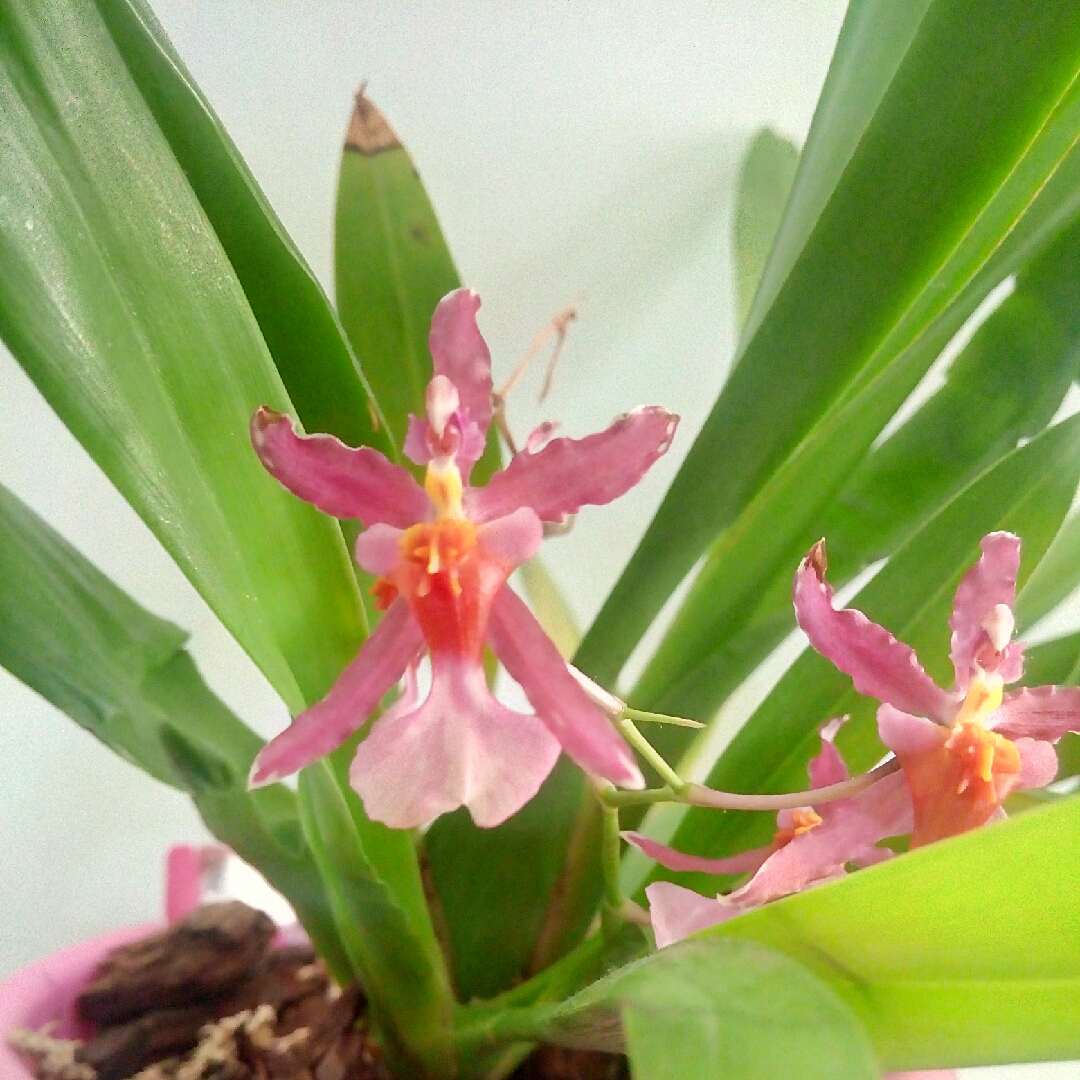
Oncidium 'Katrin Zoch'
Oncidium 'Katrin Zoch'
This orchid produces blooms that are about 3 cm in height and 2 cm across. The sepals are dark purple, thin and elongated. The lip is wider and bigger in size and is usually presents light pink. It has a yellow throat. The blooms are displayed on a thin flower spike that can reach 25-30 cm in height. Each spike can hold anywhere between 15 and 20 flowers.
-
Partial shade
-
Occasional watering
-
Not Frost hardy
-
Moist and free draining
Common name
Oncidium 'Katrin Zoch'
Latin name
Oncidium 'Katrin Zoch'
type
Orchid
family
Orchidaceae
ph
5.0 - 8.0 Acid - Neutral
Plant & bloom calendar
-
Best time to plant
-
When the plant will bloom
full grown dimensions
 0.30 M
0.30 M
0.30 M
0.30 M
Oncidium 'Katrin Zoch'
This orchid produces blooms that are about 3 cm in height and 2 cm across. The sepals are dark purple, thin and elongated. The lip is wider and bigger in size and is usually presents light pink. It has a yellow throat. The blooms are displayed on a thin flower spike that can reach 25-30 cm in height. Each spike can hold anywhere between 15 and 20 flowers.
Planting young plants
From Early Autumn TO Late Autumn
Sometimes small plantlets (keiki) appear from the nodes on the flower stems. Detach the plantlets when they have developed several good roots and pot them up in orchid compost. Water them sparingly at first, but mist them daily. Always use a proprietary orchid compost. Ensure good light levels in winter, as these are essential to encourage flowering. An east- or west-facing window would be ideal. Move to a shadier spot in summer and protect from direct sunshine. When planting terrestrial orchids outdoors, plant in semi-shade, no direct sun at midday. A very suitable place would also be on the north side of a building. Most orchids are woodland plants and therefore prefer cool sites, which do not become too dry and hot during summer. Places where ferns thrive are also suitable for. Don’t plant your orchids close to trees or big shrubs because their roots are effective competition for water and nutrients! Autumn is the best season for planting. Spread out the roots in the upper 10 cm (4 inches) of the soil, the rhizome 2-3 cm (1 inch) below the surface, shoot buds upwards. Fill in the remaining substrate without compressing it, and water thoroughly.
Flowering
From Early Spring TO Late Winter
Many orchids do not have a flowering season and flowers may be produced at any time if the right conditions are being met. Terrestrial orchids grown outdoors will mostly flower in the summer months. Flowers can last for several months.








